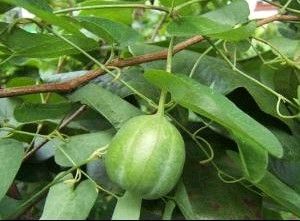Cultivation Techniques
Cultivation method
1. Selection and site preparation
In nursery areas, it is advisable to choose fertile, loose, well-drained sandy loam and water sources. After cultivating seedbeds, 75,000 kilograms of base fertilizer is applied to each hectare of decomposed manure or compost, and then the whole plant is finely smashed to make a 1.2-meter-wide aspect. For the planting sites, loam soils rich in humus should be selected and plowed once for harvest before harvest. The depth should be about 30 cm. Combined with the site preparation, 45,000 kg of compost or compost should be applied as base fertilizer per hectare. And ploughed 1 time before planting, leveling and squeezing, making a wide 1.2 meters of sorghum, surrounded by a good drainage ditch to be planted.

2. Transplanting
Before freezing in winter, plant a planting hole with a depth of 20 cm by 35 cm × 25 cm in row spacing, applying 10 kg of soil-fertilizer per hole as a base fertilizer, fill it with fine soil, and fill it to a height of 10 cm above the ground. After the spring of March to April in the spring of the following year, planting acupuncture points will be opened and the well-developed seedlings will be planted in the cave. One cave per hole will be planted and the roots will be poured after pouring.
3. Picking and sowing
When the fruit turns from green to yellow, it is harvested in batches, and the fruit cracks too late. The seeds are not able to bear dry and they should be sowed immediately after harvest or buried in wet sand and kept in a cool place. If the seedlings are taken out in the late autumn or the following spring, the seeds germinate irregularly, and the germination rate is high at a temperature ranging from 10 to 20°C. Can also be used after the harvest with gibberellin 5X104-4 'soaked in the greenhouse after the release of sand. Spring broadcast should be late March - early April, live and nursery can be.
4. Nursery
Open the ditch in the seedbed, row spacing 25cm, ditch depth 3-6cm, sowing amplitude 10cm, sow the seeds, lightly press on the cover soil, cover the straw to keep the seedbed moist, remove the cover after emergence, lhm2 with seeds 15-22.5 Kg. In April of the next year, colonization was performed at a spacing of 40cm X 30cm. Live sowing or broadcast method.
5. Fertilization
The seedling stage requires proper irrigation, applying nitrogen fertilizer once, from the time of planting to the flowering stage, topdressing nitrogen fertilizer twice, and applying phosphorus and potassium fertilizers during flowering in mid- and late August. Timely cultivating and weeding shall be carried out after the plant height is 30cm to facilitate the growth of its vines.
Field management
1, loose soil weeding
Seedlings are to be loosened and weeded. Generally when the height of seedlings is 5 cm, weeding and weeding should be performed once to avoid injury. After combining topdressing and then weeding and weeding 3 to 4 times to prevent grassland.
2, seedlings, Dingmiao
When the seedling height is 5 cm, the loosening soil is used for weeding to remove weak seedlings. When the seedling height is 10 cm, seedlings are planted at a distance of 3 to 5 cm. Seedling height 15 to 20 cm, you can plant a garden.
3, top dressing
Control the amount of nitrogen fertilizer applied in winter or early spring to avoid overgrowth of stems and leaves, and suffer from pests and diseases. Before flowering, the main method is to use mature manure, and apply appropriate amount of phosphate fertilizer. In the late growth period, in mid-August, the application of 750 kg of superphosphate and 150 kg of potash per hectare will increase the fruit setting rate, which is also beneficial to the growth of roots, and is an important part of increasing production.
4, scaffolding
Aristolochia vineensis is a creeping herb. When transplanted, the height of the seedling is 30 cm. Between the rows, pillars were set up with bamboo poles, and the ropes were pulled in the middle, 1.8 to 2 meters high.
5, trim, earth
During the period from May to June when the plants are growing vigorously, the vines that have grown too prosperous and no flower buds are cut off to reduce the consumption of nutrients. After harvesting the fruits in October, the vines were all cut off and the field weeds were removed. The soil was pre-winter soil and topdressing was applied to facilitate the wintering of the insulation and lay the foundation for the high yield in the following year.
6, watering
Aristolochi is not tolerant to drought and generally does not need watering. However, when the growing season is too dry, it should be properly watered, and the rainy season must be drained in time to avoid rot.
Pest control
Root rot
Most of the diseases occurred in July and August. After the roots were rotted, the plants died.
Control methods: remove the diseased plants; use a 50% WP to spray 1000 times.
Leaf spot
Occurred in the rainy season, the leaves are prone to spots. Pay attention to clean up the drainage ditch, remove the water in time, and spray with 1:1: 150 times Bordeaux mixture.
Buttercup butterfly
The larvae feed on the leaves and form nicks, which mostly occur in July-August.
Control methods: Clean the field health, clear the garden in winter, and handle stubble. Infant spray 50% phosphine 1500 times or 500 times spores (100 billion spores/g).
Analog Hearing Aid
Analog Hearing Aid
Shenzhen Sunshine Technology Co.,Ltd , https://www.yatwinsz.com